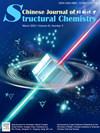Break the capacity limit of Li4Ti5O12 anodes through oxygen vacancy engineering
IF 5.9
4区 化学
Q1 CHEMISTRY, INORGANIC & NUCLEAR
引用次数: 0
Abstract
The zero-strain spinel Li4Ti5O12 stands out as a promising anode material for lithium-ion batteries due to its outstanding cycling stability. However, the limited theoretic specific capacity, low Li+ diffusion coefficient and electronic conductivity severely hinder its practical application. In this study, we demonstrate a strategy of introducing abundant oxygen vacancies not only on the surface and but also inside the bulk of Li4Ti5O12 particles via reductive thermal sintering. The oxygen vacancies can significantly enhance the electronic conductivity and lithium-ion diffusion coefficient of Li4Ti5O12, leading to a remarkable improvement in rate performance and a reduction in polarization. Moreover, additional lithium-ion accommodation sites can be created at the defective surface, contributing to a high specific capacity of over 200 mAh g−1.

求助全文
约1分钟内获得全文
求助全文
来源期刊

结构化学
化学-晶体学
CiteScore
4.70
自引率
22.70%
发文量
5334
审稿时长
13 days
期刊介绍:
Chinese Journal of Structural Chemistry “JIEGOU HUAXUE ”, an academic journal consisting of reviews, articles, communications and notes, provides a forum for the reporting and discussion of current novel research achievements in the fields of structural chemistry, crystallography, spectroscopy, quantum chemistry, pharmaceutical chemistry, biochemistry, material science, etc. Structural Chemistry has been indexed by SCI, CA, and some other prestigious publications.
 求助内容:
求助内容: 应助结果提醒方式:
应助结果提醒方式:


